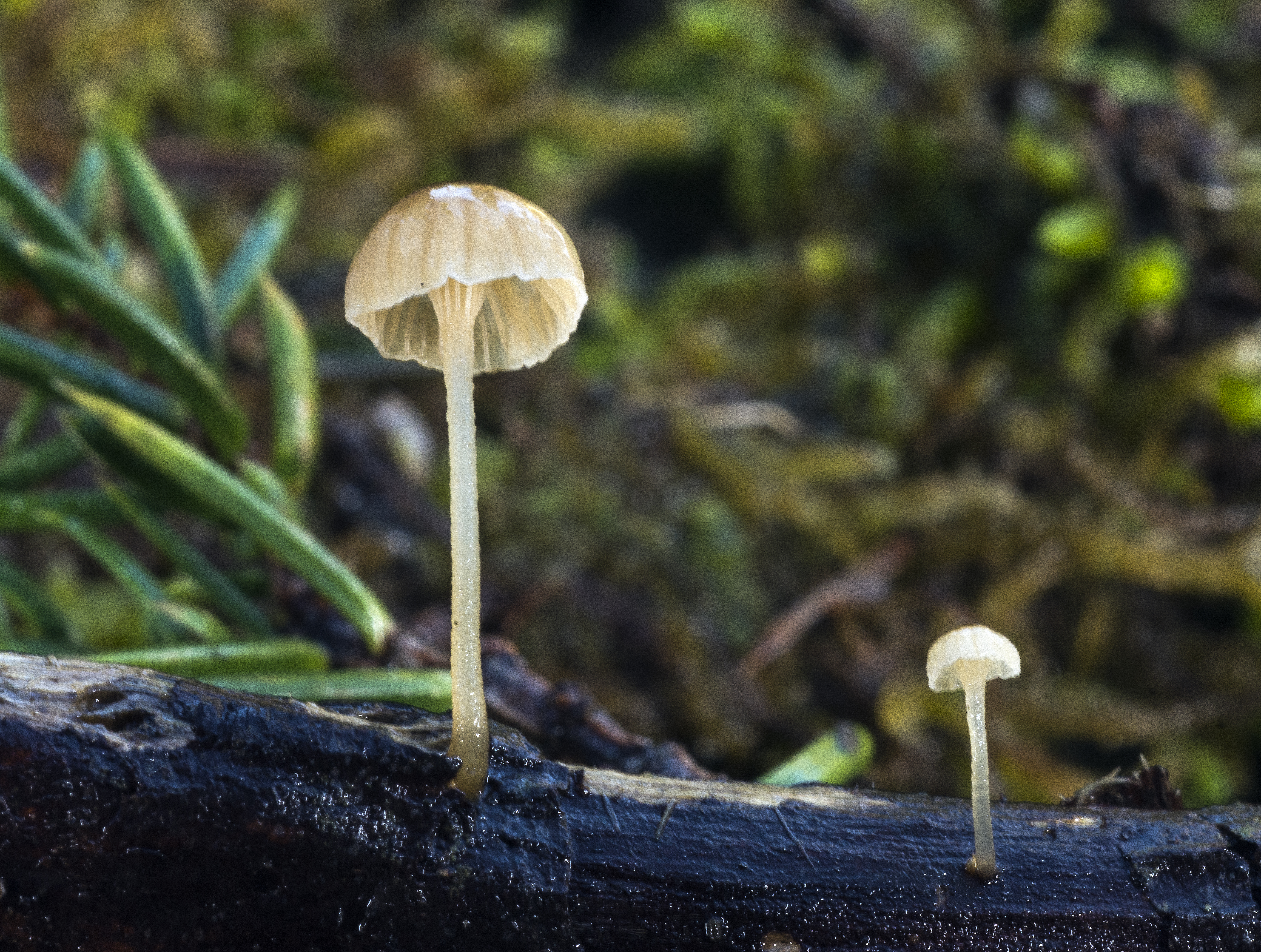Phloeomana clavata
Phloeomana clavata
Description
Two types of cheilocystidia, basidium, spores, hypha of the pileipellis, and pileocystidia.
Cap 2-12.5 mm across, hemispherical, parabolical or campanulate, to convex, flattening with age, and often somewhat depressed, translucently striate, pale ochraceous brown, pale grey brown (milky coffee), yellow brown or greyish olivaceous brown, fairly dark when moist and young, pallescent with age, dark sepia brown at the centre, paler at margin, minutely pruinose-pubescent, glabrescent. Gills 8-20 reaching the stem, arcuate, deeply decurrent, slightly paler than cap, with paler edge. Stem 8-80 _ 0.2-1 mm, cylindrical, equal, firm,pruinose, glabrescent, paler than the cap, beige brown, pale yellowish brown, watery yellowish, watery brownish or greyish, base covered with coarse, whitish fibrils. Odour absent, taste mild. Basidia 21–39 × 5–9 µm, clavate, 2-spored, with sterigmata 6–7 µm long or 4-spored. Spores 7–11 × 5.5–8.5(–9.5) µm, Qav ˜1.25 (2-spored), or 6.5–10.5 × 5–7.5 µm, Qav ˜1.28 (4-spored), broadly ellipsoid, broadly amygdaliform to subglobose, non-amyloid. Cheilocystidia 20–88 × 4–16 µm, forming a sterile band, sub-cylindrical, fusiform to lageniform, apically passing into a slender, simple to somewhat branched neck 2–5 µm wide, often capped with a large drop of gelatinous matter; more rarely, and mostly situated near the margin of the cap, shorter, 17–35 × 6–15 µm, clavate with several simple to branched, cylindrical excrescences. Pleurocystidia absent. Lamellar trama non-dextrinoid. Hyphae of the pileipellis 2.5–6.5 µm wide, covered with simple to much branched excrescences up to 22.5 × 1–2 µm, which may develop into very dense masses, tending to become somewhat gelatinized, with some of the diverticulae elongated to 32 µm long. Lower layers (hypoderm and context) composed of wider hyphae, 3–10 µm wide, distinctly incrusted with brownish pigment. Hyphae of the cortical layer of the stem 1.5–3.5 µm wide, smooth for the greater part, but covered with side-branches and numerous caulocystidia 35–78 × 3–11 µm, especially at the stem apex, cylindrical and curved or flexuous, often with irregular outgrowths, simple to forked, sometimes capped with a large drop of gelatinous matter. Clamps abundant in 4-spored form, absent in 2-spored form.
Ecology and distribution
Solitary or in clusters on conifer bark and litter (e. g. Thuja, Picea, Pinus, Juniperus) but also found on hardwood, e. g. on moss covered base of old Salix caprea. Widespread but seems to be rather rare in Norway. Autumn.


